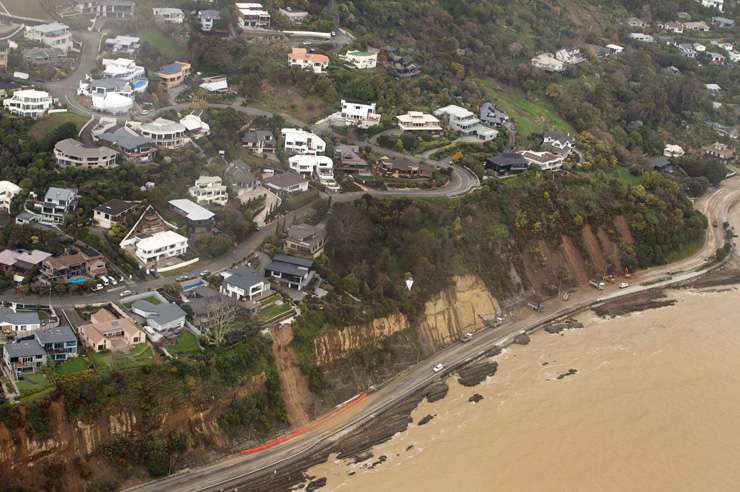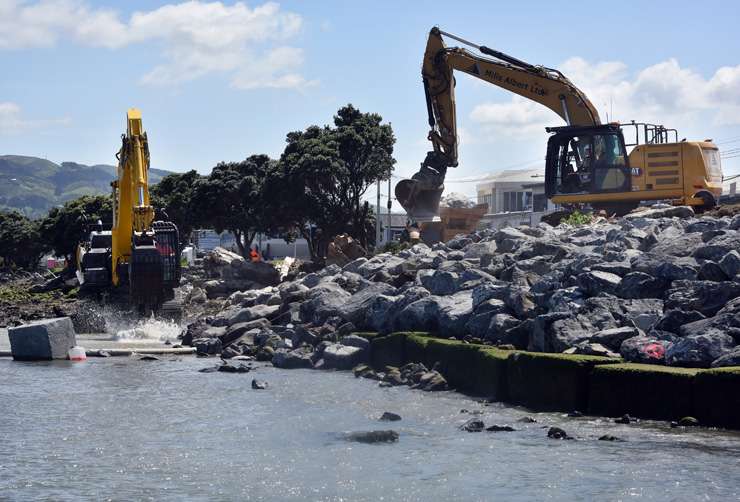Well-heeled home buyers who snap up coastal property could find themselves the last man standing as sea levels creep up. Ironically, some of the very property that fetch some of the highest prices in New Zealand is that most at risk of rising sea level.
Sea levels worldwide have risen more than 21cm since 1880 thanks to humans pumping carbon dioxide into the atmosphere, causing glaciers and ice sheets to melt and thermal expansion of seawater as it warms.
Yet home buyers, especially wealthy ones who can afford waterfront properties, are buying with blinkers on as sea levels rise year after year. They may find themselves to be the last man standing, says James Wilson, head of valuations at OneRoof's data partner Valocity.
The issue isn’t just inundation and other climate-related risks. Owners of multi-million dollar coastal homes could soon find themselves refused lending by banks, and unable to get insurance, or paying eye-watering premiums. Increasingly both insurance companies and banks have access to better data about climate change risks such as sea level rise and flooding.
Start your property search
Goodbye mortgages and insurance
Banks are using climate related data in their digital mortgage process more and more, identifying at-risk homes, according to research by CoreLogic.
Otago is most at risk, having one of the highest flood risk concentrations in New Zealand, when annual average river flood loss is calculated relative to property value, the research found. The region accounts for 5% of the total national residential property, but 15% of national annual average flood loss.
However, Auckland and Wellington with their major populations are likely to see larger numbers of homes affected by flood risk. Hawke’s Bay, Manawatu-Wanganui and Marlborough homeowners can expect the highest increases in annual flood loss between now and 2050. CoreLogic is predicting increases of up to 33%, 23% and 21% respectively in damage from floods.
Under the Financial Sector (Climate-related Disclosures and Other Matters) Amendment Act, banks will have increased reporting requirements around climate-related risks, of which mortgages are one.
Insurance risk
On the insurance front, CoreLogic has teamed up with Munich Re, a major reinsurer, to perform an analysis on the flood threat facing New Zealand’s residential property sector. They found that 11% of New Zealand residential property is exposed to river flood risk, and that’s expected to increase to 17% by 2050.

An aerial view of Nelson shows coastal slippages in August this year - the result of extreme flooding in the region. Photo / Tim Cuff

Fighting back: Heavy machinery repairs a sea wall in the Petone area of Wellington. Photo / Getty Images
Eventually, says Nick Goodall, head of research at CoreLogic, only people who can buy mortgage free will be able to purchase some properties. “Those people [may] have no intention of reselling. They think: ‘I don’t care. I’m going to enjoy it. By the time the sea level will affect it, I’m going to be dead’. It really does narrow down the people that are interested or able to buy those properties.”
Some of these properties may not be insurable at all in the future, he adds. “Insurance companies have gone through a process over the last few years of making more risk-based insurance premiums. That means you will pay for the risk you are taking on. [Risk-based pricing] hasn’t really fully flowed through [because] the modelling of flooding and sea level rise can be quite inconsistent. One of the things that the banks and insurance companies want is a centralised government-backed model.”
Real flooding on the ground
Wilson says it’s increasingly important for those looking to buy coastal property to take the time to do the research. The ignorance is bliss mentality isn’t really going to hold out for much longer.
“There are some parts of New Zealand which are potentially really exposed to sea level rise or climate change events.”
Wilson recommends checking before signing the sale and purchase agreement that the property is both mortgageable, and insurable at a sensible price. “A lot of buyers historically have done the insurance piece after the fact and only because the bank asked for [it] as a requirement of the mortgage.”
Once a buyer has signed the sale and purchase agreement it may be too late, even if they can’t get a mortgage and/or insurance. “It’s often very difficult to get out of that situation.
“Understand what information might be out there, to consider whether or not it’s an investment that you want to make. So at least you’re buying that from an informed position.”
Wilson says the costs of remediating homes, or taking actions against sea level rise, or other climate change associated hazards can be significant.

CoreLogic head of research Nick Goodall: "You will pay for the risk you are taking on." Photo / Supplied
“If, for example, you’re having to contribute towards, say a seawall, that can have costs per household to the tune of hundreds of thousands of dollars. So the impact of not understanding what hazards might impact your property can be significant.”
Wilson says a lot of buyers of coastal properties are not aware that they can find out such information when buying property.
“There is a lot of data available. The starting point is, look at the local council’s websites. They might have a website [that] just indicates a hazard is present or not. Or they might have an interactive website where you can use a mapping tool to understand what hazards might impact that particular property. If it’s council provided, they’re nearly always free to access.
“The insurer will have information or data that they hold, or they’ve purchased about the property or the location. They will be able to let you know if the property is a) insurable and b) has a premium that’s significantly higher than other properties as a result of a certain hazard or risk.
“I couldn’t emphasise enough how important it is for you to do that ahead of agreeing to buy the property. It’s a great way for you to screen if there are any risks you need to know about before you make that purchase.”
Wilson says buyers don’t seem to be taking these risks into account with coastal and other at-risk property. “We haven’t seen across that last sort of two to three years of Covid, boom, people taking into account the price that they’ll pay for a property because of its proximity to the coast.
“Many buyers think well, because [the previous owners] paid x for the property, therefore, it must be safe. It’s a case of you don’t want to be the last person to own the property if there is going to be an impact.”
Strand Marsden Project
Goodall is part of the Otago University’s Strand Marsden Project working group, which is looking at the effect of sea level rise and climate change on property values. It’s not just high-value homes that are going to be affected, he says.
“They originally did a study based on the South Dunedin floods and looked at the impact on prices. They’re extending that research nationwide. One of the early insights was that actually a lot of [homes that are] coastal or exposed to flooding, are actually lower-value property.”







































































